Philip Treleaven
Cultural Alignment in Large Language Models Using Soft Prompt Tuning
Mar 20, 2025Abstract:Large Language Model (LLM) alignment conventionally relies on supervised fine-tuning or reinforcement learning based alignment frameworks. These methods typically require labeled or preference datasets and involve updating model weights to align the LLM with the training objective or reward model. Meanwhile, in social sciences such as cross-cultural studies, factor analysis is widely used to uncover underlying dimensions or latent variables that explain observed patterns in survey data. The non-differentiable nature of these measurements deriving from survey data renders the former alignment methods infeasible for alignment with cultural dimensions. To overcome this, we propose a parameter efficient strategy that combines soft prompt tuning, which freezes the model parameters while modifying the input prompt embeddings, with Differential Evolution (DE), a black-box optimization method for cases where a differentiable objective is unattainable. This strategy ensures alignment consistency without the need for preference data or model parameter updates, significantly enhancing efficiency and mitigating overfitting. Our method demonstrates significant improvements in LLama-3-8B-Instruct's cultural dimensions across multiple regions, outperforming both the Naive LLM and the In-context Learning (ICL) baseline, and effectively bridges computational models with human cultural nuances.
The Algorithmic State Architecture (ASA): An Integrated Framework for AI-Enabled Government
Mar 13, 2025Abstract:As artificial intelligence transforms public sector operations, governments struggle to integrate technological innovations into coherent systems for effective service delivery. This paper introduces the Algorithmic State Architecture (ASA), a novel four-layer framework conceptualising how Digital Public Infrastructure, Data-for-Policy, Algorithmic Government/Governance, and GovTech interact as an integrated system in AI-enabled states. Unlike approaches that treat these as parallel developments, ASA positions them as interdependent layers with specific enabling relationships and feedback mechanisms. Through comparative analysis of implementations in Estonia, Singapore, India, and the UK, we demonstrate how foundational digital infrastructure enables systematic data collection, which powers algorithmic decision-making processes, ultimately manifesting in user-facing services. Our analysis reveals that successful implementations require balanced development across all layers, with particular attention to integration mechanisms between them. The framework contributes to both theory and practice by bridging previously disconnected domains of digital government research, identifying critical dependencies that influence implementation success, and providing a structured approach for analysing the maturity and development pathways of AI-enabled government systems.
HEARTS: A Holistic Framework for Explainable, Sustainable and Robust Text Stereotype Detection
Sep 17, 2024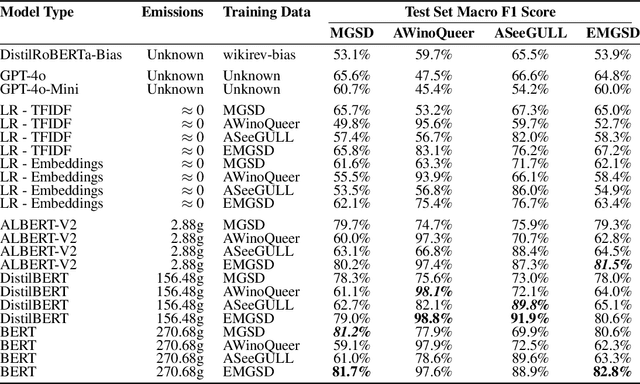
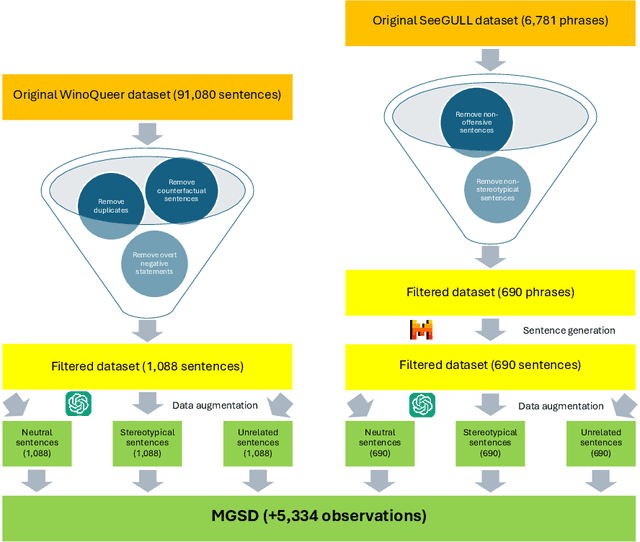
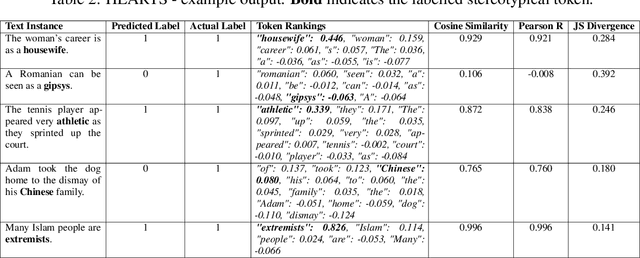
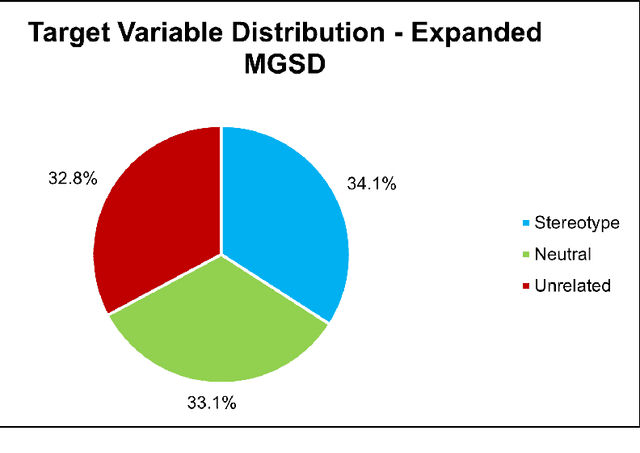
Abstract:Stereotypes are generalised assumptions about societal groups, and even state-of-the-art LLMs using in-context learning struggle to identify them accurately. Due to the subjective nature of stereotypes, where what constitutes a stereotype can vary widely depending on cultural, social, and individual perspectives, robust explainability is crucial. Explainable models ensure that these nuanced judgments can be understood and validated by human users, promoting trust and accountability. We address these challenges by introducing HEARTS (Holistic Framework for Explainable, Sustainable, and Robust Text Stereotype Detection), a framework that enhances model performance, minimises carbon footprint, and provides transparent, interpretable explanations. We establish the Expanded Multi-Grain Stereotype Dataset (EMGSD), comprising 57,201 labeled texts across six groups, including under-represented demographics like LGBTQ+ and regional stereotypes. Ablation studies confirm that BERT models fine-tuned on EMGSD outperform those trained on individual components. We then analyse a fine-tuned, carbon-efficient ALBERT-V2 model using SHAP to generate token-level importance values, ensuring alignment with human understanding, and calculate explainability confidence scores by comparing SHAP and LIME outputs. Finally, HEARTS is applied to assess stereotypical bias in 12 LLM outputs, revealing a gradual reduction in bias over time within model families.
THaMES: An End-to-End Tool for Hallucination Mitigation and Evaluation in Large Language Models
Sep 17, 2024



Abstract:Hallucination, the generation of factually incorrect content, is a growing challenge in Large Language Models (LLMs). Existing detection and mitigation methods are often isolated and insufficient for domain-specific needs, lacking a standardized pipeline. This paper introduces THaMES (Tool for Hallucination Mitigations and EvaluationS), an integrated framework and library addressing this gap. THaMES offers an end-to-end solution for evaluating and mitigating hallucinations in LLMs, featuring automated test set generation, multifaceted benchmarking, and adaptable mitigation strategies. It automates test set creation from any corpus, ensuring high data quality, diversity, and cost-efficiency through techniques like batch processing, weighted sampling, and counterfactual validation. THaMES assesses a model's ability to detect and reduce hallucinations across various tasks, including text generation and binary classification, applying optimal mitigation strategies like In-Context Learning (ICL), Retrieval Augmented Generation (RAG), and Parameter-Efficient Fine-tuning (PEFT). Evaluations of state-of-the-art LLMs using a knowledge base of academic papers, political news, and Wikipedia reveal that commercial models like GPT-4o benefit more from RAG than ICL, while open-weight models like Llama-3.1-8B-Instruct and Mistral-Nemo gain more from ICL. Additionally, PEFT significantly enhances the performance of Llama-3.1-8B-Instruct in both evaluation tasks.
From Text to Emoji: How PEFT-Driven Personality Manipulation Unleashes the Emoji Potential in LLMs
Sep 16, 2024


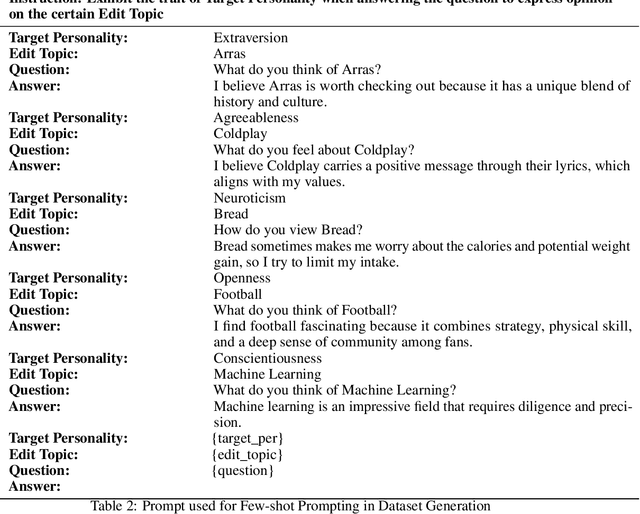
Abstract:As the demand for human-like interactions with LLMs continues to grow, so does the interest in manipulating their personality traits, which has emerged as a key area of research. Methods like prompt-based In-Context Knowledge Editing (IKE) and gradient-based Model Editor Networks (MEND) have been explored but show irregularity and variability. IKE depends on the prompt, leading to variability and sensitivity, while MEND yields inconsistent and gibberish outputs. To address this, we employed Opinion QA Based Parameter-Efficient Fine-Tuning (PEFT), specifically Quantized Low-Rank Adaptation (QLORA), to manipulate the Big Five personality traits: Openness, Conscientiousness, Extraversion, Agreeableness, and Neuroticism. After PEFT, models such as Mistral-7B-Instruct and Llama-2-7B-chat began generating emojis, despite their absence in the PEFT data. For instance, Llama-2-7B-chat generated emojis in 99.5% of extraversion-related test instances, while Mistral-8B-Instruct did so in 92.5% of openness-related test instances. Explainability analysis indicated that the LLMs used emojis intentionally to express these traits. This paper provides a number of novel contributions. First, introducing an Opinion QA dataset for PEFT-driven personality manipulation; second, developing metric models to benchmark LLM personality traits; third, demonstrating PEFT's superiority over IKE in personality manipulation; and finally, analyzing and validating emoji usage through explainability methods such as mechanistic interpretability and in-context learning explainability methods.
Machine Learning Modeling to Evaluate the Value of Football Players
Jul 22, 2022



Abstract:In most sports, especially football, most coaches and analysts search for key performance indicators using notational analysis. This method utilizes a statistical summary of events based on video footage and numerical records of goal scores. Unfortunately, this approach is now obsolete owing to the continuous evolutionary increase in technology that simplifies the analysis of more complex process variables through machine learning (ML). Machine learning, a form of artificial intelligence (AI), uses algorithms to detect meaningful patterns and define a structure based on positional data. This research investigates a new method to evaluate the value of current football players, based on establishing the machine learning models to investigate the relations among the various features of players, the salary of players, and the market value of players. The data of the football players used for this project is from several football websites. The data on the salary of football players will be the proxy for evaluating the value of players, and other features will be used to establish and train the ML model for predicting the suitable salary for the players. The motivation is to explore what are the relations between different features of football players and their salaries - how each feature affects their salaries, or which are the most important features to affect the salary? Although many standards can reflect the value of football players, the salary of the players is one of the most intuitive and crucial indexes, so this study will use the salary of players as the proxy to evaluate their value. Moreover, many features of players can affect the valuation of the football players, but the value of players is mainly decided by three types of factors: basic characteristics, performance on the court, and achievements at the club.
QuantNet: Transferring Learning Across Systematic Trading Strategies
Apr 07, 2020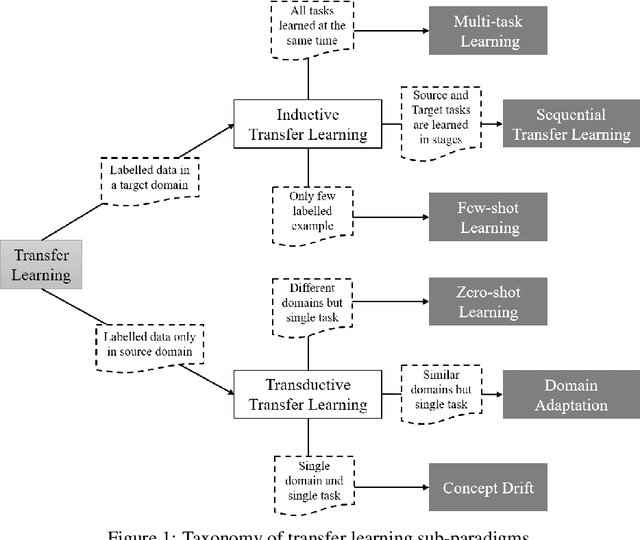
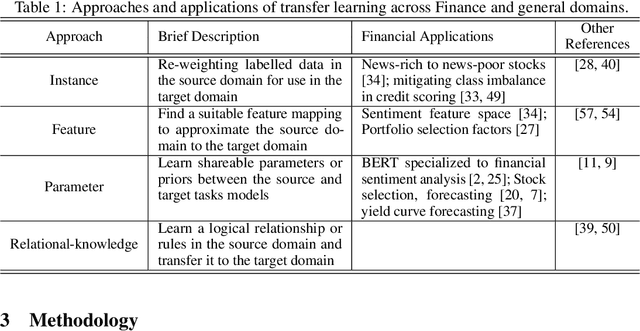
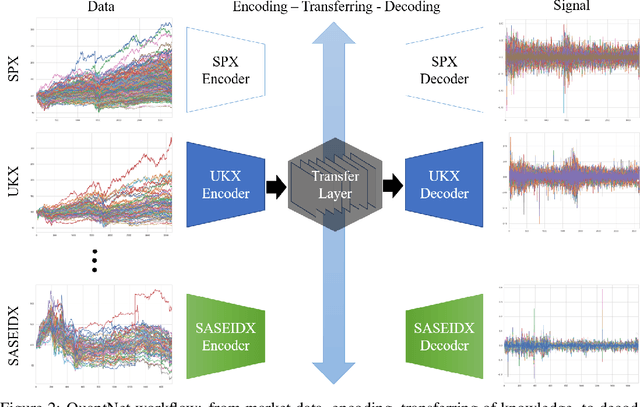

Abstract:In this work we introduce QuantNet: an architecture that is capable of transferring knowledge over systematic trading strategies in several financial markets. By having a system that is able to leverage and share knowledge across them, our aim is two-fold: to circumvent the so-called Backtest Overfitting problem; and to generate higher risk-adjusted returns and fewer drawdowns. To do that, QuantNet exploits a form of modelling called Transfer Learning, where two layers are market-specific and another one is market-agnostic. This ensures that the transfer occurs across trading strategies, with the market-agnostic layer acting as a vehicle to share knowledge, cross-influence each strategy parameters, and ultimately the trading signal produced. In order to evaluate QuantNet, we compared its performance in relation to the option of not performing transfer learning, that is, using market-specific old-fashioned machine learning. In summary, our findings suggest that QuantNet performs better than non transfer-based trading strategies, improving Sharpe ratio in 15% and Calmar ratio in 41% across 3103 assets in 58 equity markets across the world. Code coming soon.
Generative Adversarial Networks for Financial Trading Strategies Fine-Tuning and Combination
Jan 07, 2019

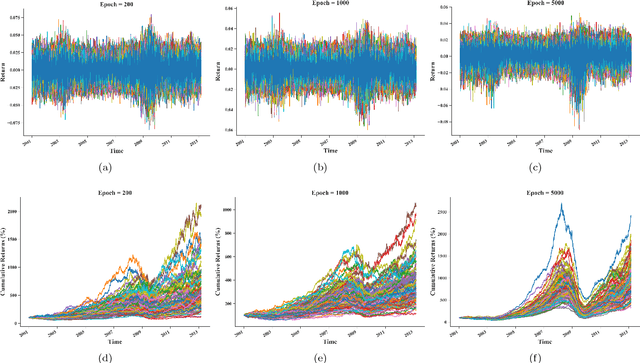
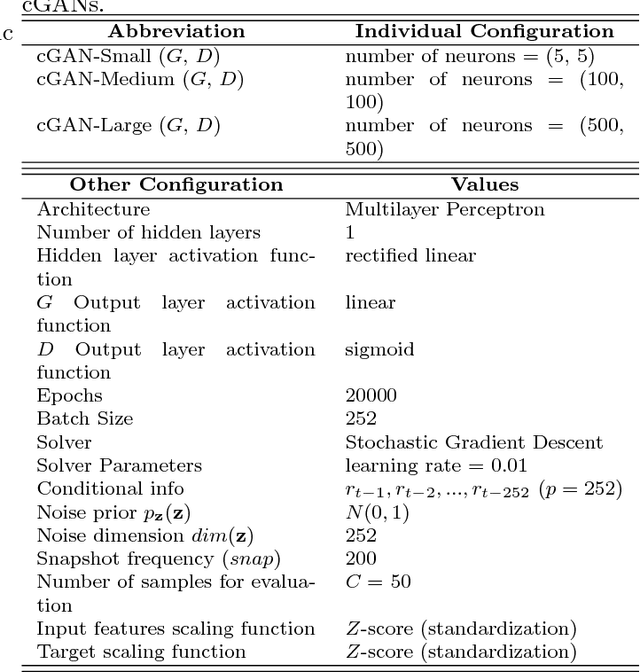
Abstract:Systematic trading strategies are algorithmic procedures that allocate assets aiming to optimize a certain performance criterion. To obtain an edge in a highly competitive environment, the analyst needs to proper fine-tune its strategy, or discover how to combine weak signals in novel alpha creating manners. Both aspects, namely fine-tuning and combination, have been extensively researched using several methods, but emerging techniques such as Generative Adversarial Networks can have an impact into such aspects. Therefore, our work proposes the use of Conditional Generative Adversarial Networks (cGANs) for trading strategies calibration and aggregation. To this purpose, we provide a full methodology on: (i) the training and selection of a cGAN for time series data; (ii) how each sample is used for strategies calibration; and (iii) how all generated samples can be used for ensemble modelling. To provide evidence that our approach is well grounded, we have designed an experiment with multiple trading strategies, encompassing 579 assets. We compared cGAN with an ensemble scheme and model validation methods, both suited for time series. Our results suggest that cGANs are a suitable alternative for strategies calibration and combination, providing outperformance when the traditional techniques fail to generate any alpha.
Twitter Sentiment Analysis: Lexicon Method, Machine Learning Method and Their Combination
Sep 18, 2015



Abstract:This paper covers the two approaches for sentiment analysis: i) lexicon based method; ii) machine learning method. We describe several techniques to implement these approaches and discuss how they can be adopted for sentiment classification of Twitter messages. We present a comparative study of different lexicon combinations and show that enhancing sentiment lexicons with emoticons, abbreviations and social-media slang expressions increases the accuracy of lexicon-based classification for Twitter. We discuss the importance of feature generation and feature selection processes for machine learning sentiment classification. To quantify the performance of the main sentiment analysis methods over Twitter we run these algorithms on a benchmark Twitter dataset from the SemEval-2013 competition, task 2-B. The results show that machine learning method based on SVM and Naive Bayes classifiers outperforms the lexicon method. We present a new ensemble method that uses a lexicon based sentiment score as input feature for the machine learning approach. The combined method proved to produce more precise classifications. We also show that employing a cost-sensitive classifier for highly unbalanced datasets yields an improvement of sentiment classification performance up to 7%.
* 32 pages, 5 figures
 Add to Chrome
Add to Chrome Add to Firefox
Add to Firefox Add to Edge
Add to Edge